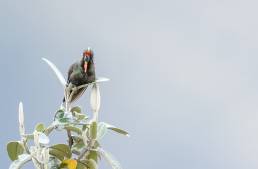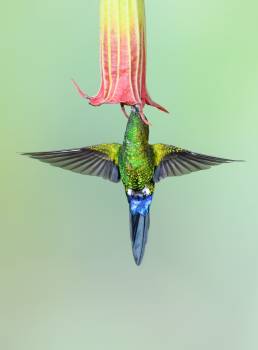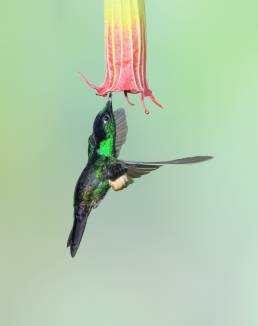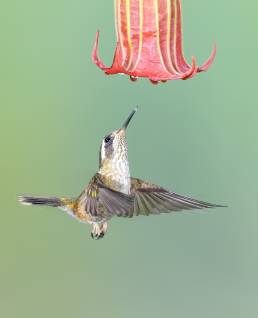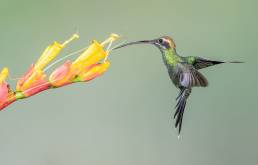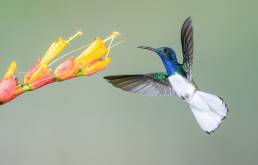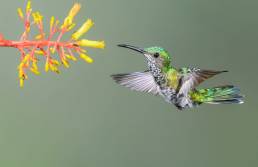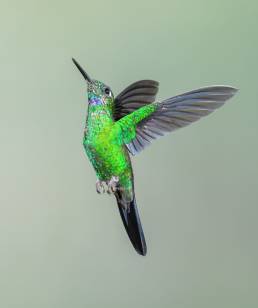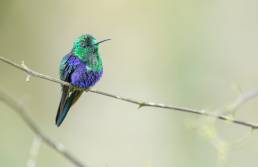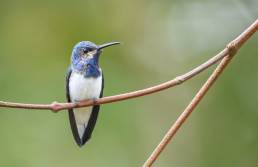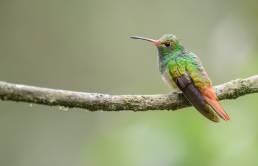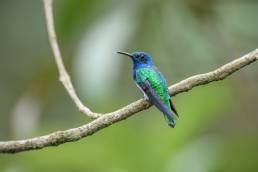24 Nov 2018
Rainbow-bearded Thornbill (Chalcostigma herrani)
Rainbow-bearded thornbill (Chalcostigma herrani) is one of few high altitude hummingbirds, and not easy to get up close…
23 Nov 2018
Sapphire-vented Puffleg (Eriocnemis luciani)
Sapphire-vented puffleg (Eriocnemis luciani) is a frequent visitor to feeders in Ecuador and here its visiting a…
23 Nov 2018
Buff-winged Starfrontlet (Coeligena lutetiae)
At 11 cm (4,33 in) and a long bill buff-winged starfrontlet (Coeligena lutetiae) is one of the larger species of…
23 Nov 2018
Speckled Hummingbird (Adelomyia melanogenys)
Speckled hummingbird (Adelomyia melanogenys) is one of the smallest of the hummingbird species. Both sexes look alike.……
22 Nov 2018
White-whiskered Hermit (Phaethornis yaruqui)
White-whiskered hermit (Phaethornis yaruqui) is a large hummingbird with a distinct hum from its large wings. Its visit…
22 Nov 2018
White-necked Jacobin (Florisuga mellivora)
The white-necked jacobin (Florisuga mellivora) is a very common visitor to feeders in Ecuador and is unmissable.
22 Nov 2018
White-necked Jacobin (Florisuga mellivora)
The female white-necked jacobin (Florisuga mellivora) lacks the striking blue and white of the male, but as is the case…
22 Nov 2018
Green-crowned Brilliant (Heliodoxa jacula)
Green-crowned brilliant (Heliodoxa jacula) is one of the larger species of hummingbirds. It's a common visitor of…
21 Nov 2018
Crowned Woodnymph (Thalurania colombica)
Capturing a hummingbird perched for a prolonged time is not easy nor predictable as they perch only for brief moments…
21 Nov 2018
White-necked Jacobin (Florisuga mellivora)
A white-necked jacobin (Florisuga mellivora) perched for a few seconds. Capturing a hummingbird perched for a prolonged…
21 Nov 2018
Rufous-tailed hummingbird (Amazilia tzacatl)
A rufous-tailed hummingbird (Amazilia tzacatl) perched for a few seconds. Capturing a hummingbird perched for a…
21 Nov 2018
White-necked Jacobin (Florisuga mellivora)
A white-necked jacobin (Florisuga mellivora) perched for a few seconds. Capturing a hummingbird perched for a prolonged…
